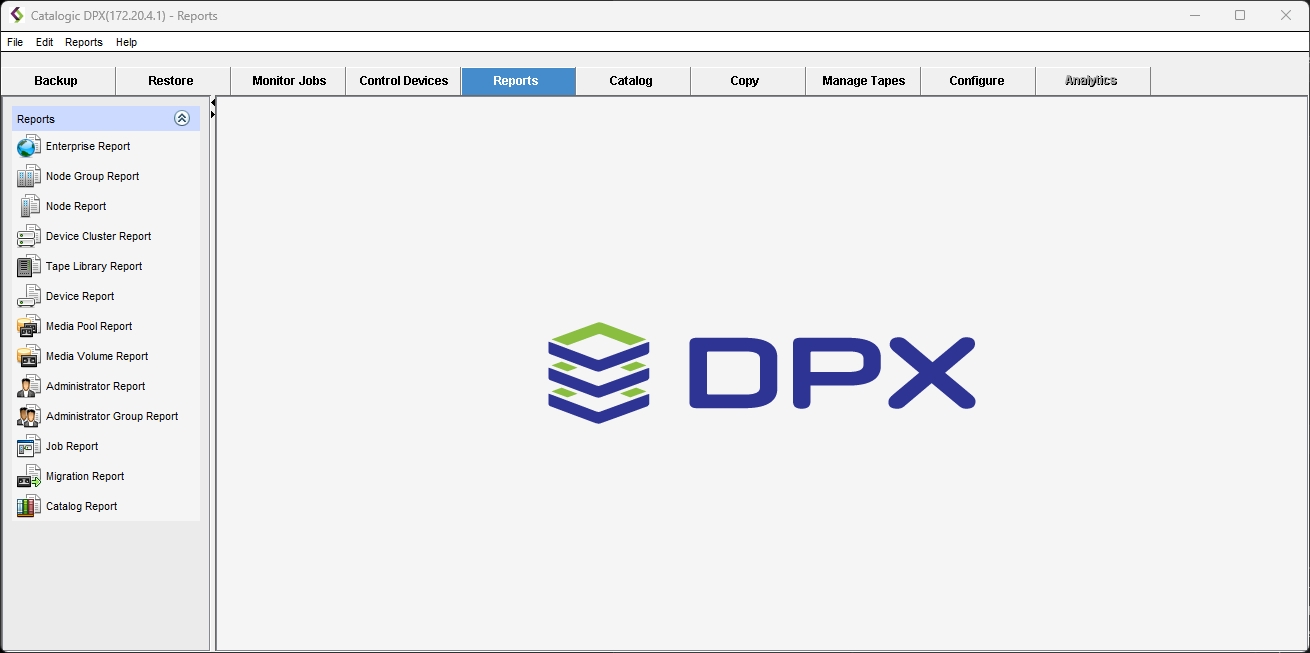Reports Tab
Reports Tab provides a listing of all storage device clusters in the Enterprise. The report includes the device cluster name, device type, and number of devices in the device cluster. In the Reports tab, you can open the following pages from the task panel:

Tape Library Report
Provides a listing of tape libraries in the Enterprise. The report includes information such as the tape library name, associated node, and number of devices attached.
Device Report
Provides a listing of all storage devices in the Enterprise. The report includes information such as device name, associated device cluster, associated node, and status.
Media Pool Report
Provides a listing of all media pools in the Enterprise. The report includes the pool name, media type, minimum number of media in the pool, and current number of media in the pool.
Media Volume Report
Provides a listing of all tapes in all media pools in the Enterprise. The report includes information such as media type, associated media pool, and status.
Administrator Report
Provides a listing of all administrators in this Enterprise. The report includes administrator names, groups, and privilege classes.
Administrator Group Report
Provides a listing of all administrator groups in this Enterprise. The report includes administrator groups and the resources assigned to them.
Job Report
Provides a listing of all jobs in the Enterprise. The report includes information such as job name, job status, and start time.
Migration Report
Provides a listing of tape migration job activity.
Catalog Report
Provides a listing of all jobs in the Catalog for the Enterprise.
Last updated